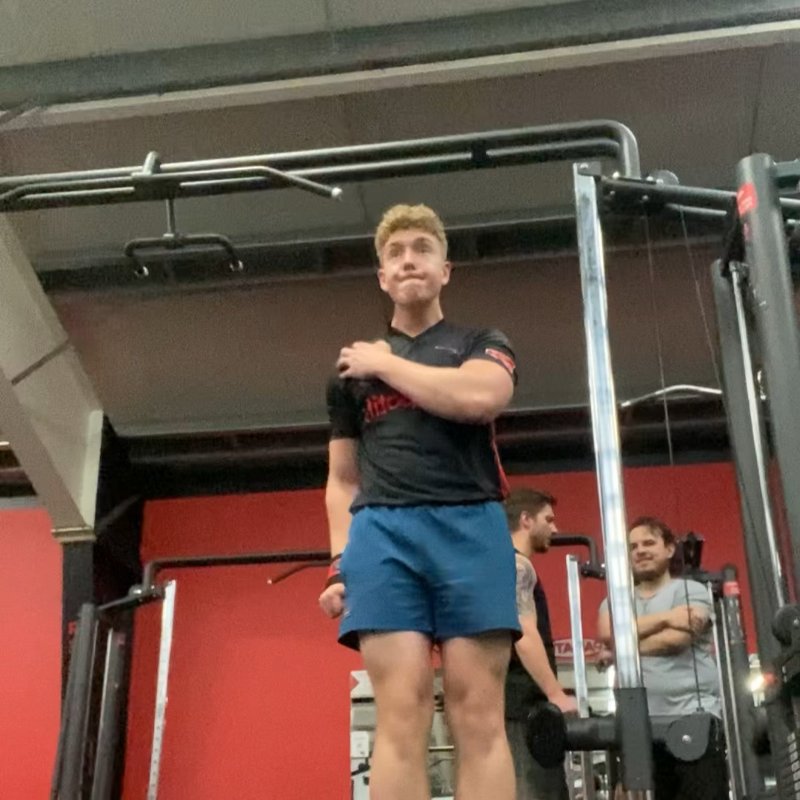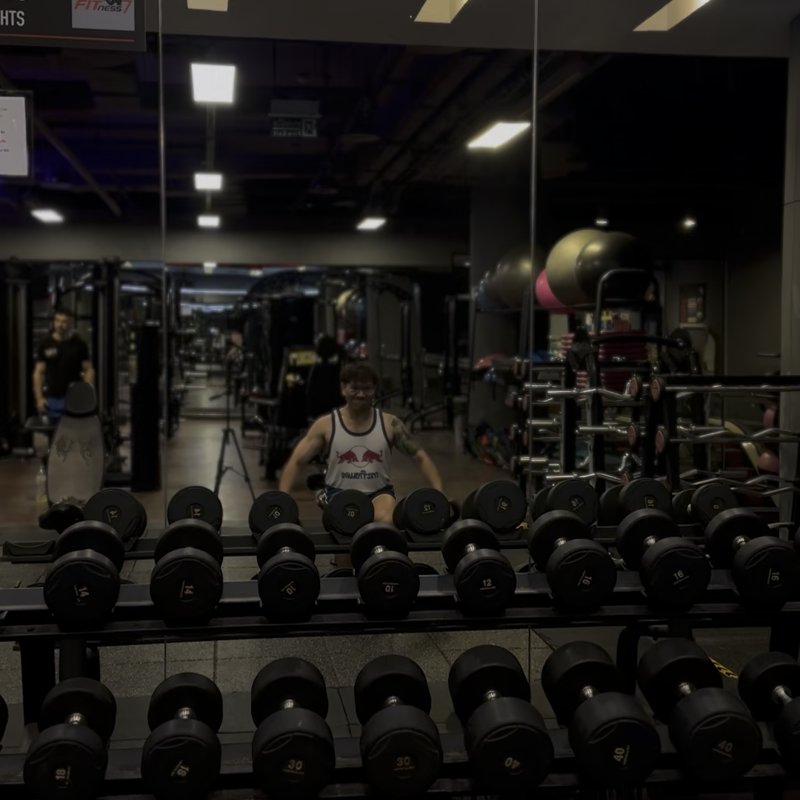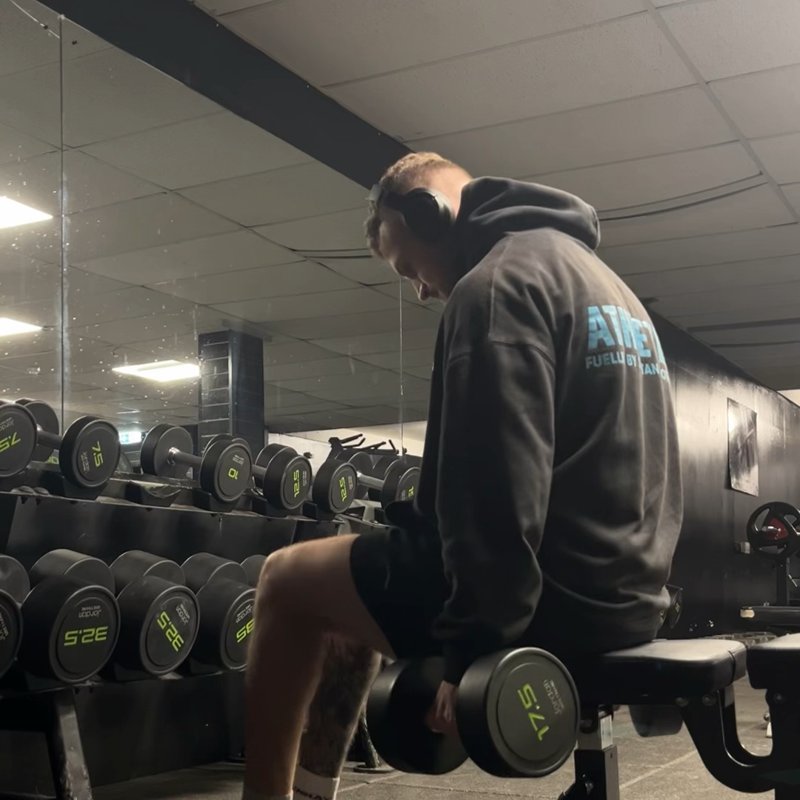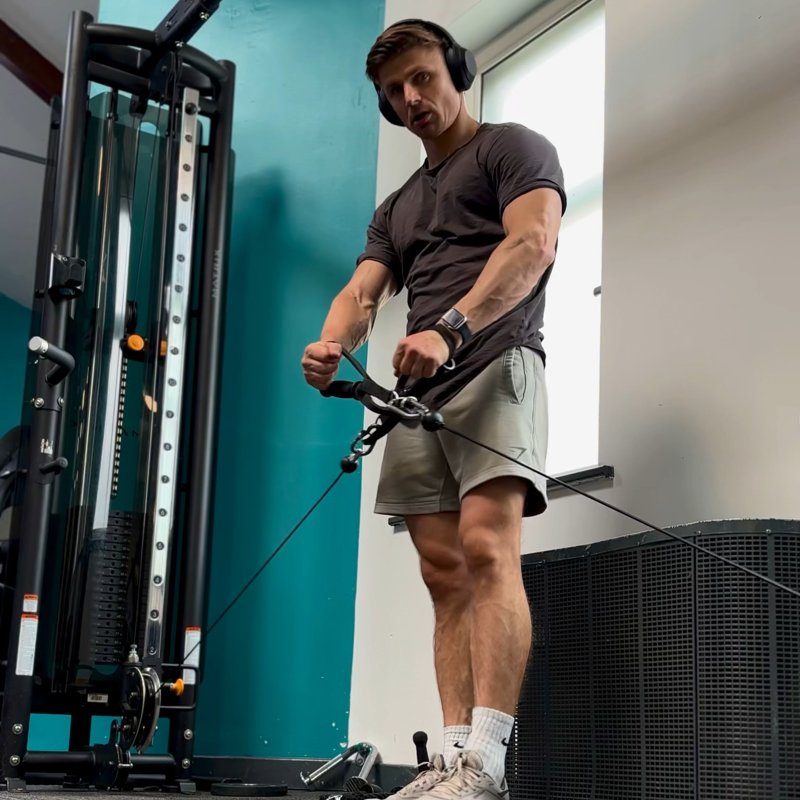Lateral Raise Machine: The Ultimate Guide
The Lateral Raise Machine is a guided resistance exercise that targets the middle deltoids through shoulder abduction, allowing for isolated shoulder development with a fixed movement path and consistent resistance profile.
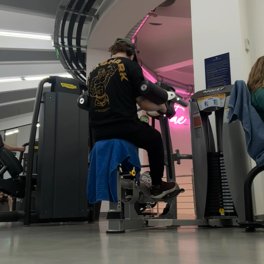
Quick Facts
Key Benefit
Targeted middle deltoid development with reduced stabilization demands
Primary Muscles
Anterior Deltoids, Medial Deltoids
Secondary Muscles
Abdominals, Posterior Deltoids, Traps
Equipment
machine
Difficulty
Beginner
Type
Strength
In This Guide
Ready to master the Lateral Raise Machine?
Track your progress, see improvements over time, and build strength consistently.
Download GravitusThe Lateral Raise Machine offers a structured approach to one of the most effective shoulder isolation exercises, providing the muscle-building benefits of lateral raises with the added advantages of guided motion and mechanical stability. This specialized equipment isolates the middle deltoids—the shoulder muscles responsible for creating width and that distinctive "capped" shoulder appearance—through controlled shoulder abduction.
What makes this machine particularly valuable is its guided movement path. By fixing the arms in the optimal trajectory for middle deltoid activation, the machine reduces the coordination and stabilization demands that can sometimes limit loading or proper execution with free weight variations. This makes it especially beneficial for beginners learning proper shoulder mechanics, those rehabilitating from certain injuries, or experienced lifters seeking to maximize middle deltoid stimulation with reduced risk of compensatory patterns.
Beyond aesthetic benefits, strengthening the middle deltoids contributes to improved shoulder joint stability, enhanced performance in pressing and pushing movements, and more balanced overall shoulder development. The middle deltoid portion often requires specific isolation work, as compound pressing exercises typically emphasize the anterior (front) deltoids while leaving the middle portion relatively understimulated.
Whether you're looking to create wider, more defined shoulders, balance anterior-dominant shoulder development, or simply add another effective tool to your shoulder training arsenal, the Lateral Raise Machine provides an accessible and effective approach to targeted deltoid development.
Benefits of Lateral Raise Machine
The Lateral Raise Machine offers several unique advantages that make it a valuable addition to any shoulder training program.
Guided Movement Path
Provides a fixed trajectory that optimizes middle deltoid activation while reducing the potential for compensatory patterns or improper form.
Reduced Stabilization Demands
Decreases the need for shoulder joint stabilization, allowing greater focus on the target muscles and potentially enabling heavier loading.
Joint-Friendly Loading
Many machines feature designs that match the resistance curve to the shoulder's natural strength curve, potentially reducing stress at vulnerable positions.
Beginner Accessibility
Simplifies learning proper shoulder abduction patterns without the coordination demands of free weight exercises.
Constant Tension
Most machines maintain continuous resistance throughout the range of motion, maximizing time under tension for muscle development.
Proper Form & Technique
Setup
- Adjust the seat height so that your shoulders align with the machine's axis of rotation.
- Sit with your back firmly against the back pad, maintaining proper posture throughout.
- Position your arms on the movement arms or pads, depending on the specific machine design.
- Ensure your elbows are slightly bent (approximately 10-15 degrees) and maintain this position throughout the exercise.
- Keep your wrists neutral—not flexed or extended—to minimize unnecessary joint stress.
- For unilateral machines, grip any available handles; for bilateral machines, position both arms symmetrically.
- Engage your core slightly to stabilize your torso throughout the movement.
- If the machine has a seatbelt or stabilization strap, secure it appropriately for added support.
- Set the weight selector pin at an appropriate resistance for your strength level.
Movement
- Begin with your arms down at your sides or in the machine's starting position, with the pads resting against your outer arms.
- Maintaining a slight bend in your elbows, raise your arms outward and upward by contracting your middle deltoids.
- Keep your torso stable throughout—avoid leaning or using body momentum to assist the movement.
- Continue raising until your arms are approximately parallel to the floor or slightly higher, depending on shoulder mobility.
- At the top position, focus on squeezing your middle deltoids for a momentary contraction.
- Slowly lower the weight back to the starting position with control, maintaining tension in the deltoids.
- Avoid letting the weight stack touch down completely between repetitions to maintain continuous tension.
- Exhale during the lifting phase and inhale during the lowering phase.
- Repeat for the desired number of repetitions while maintaining proper form throughout.
Key Form Tips
Range of Motion
Find a range that maximizes deltoid activation without causing shoulder discomfort, typically raising until arms are parallel to the floor or slightly higher.
Elbow Position
Maintain a consistent, slight bend in your elbows throughout the entire movement, avoiding the tendency to straighten or further bend the arms.
Shoulder Posture
Keep your shoulders down away from your ears throughout the movement, avoiding the common tendency to elevate them as fatigue develops.
Controlled Movement
Resist using momentum or swinging, instead focusing on deliberate muscle contraction to move the weight with proper control.
Head Position
Maintain a neutral neck alignment looking straight ahead, avoiding the tendency to jut the head forward as effort increases.
Muscles Worked
Primary Muscles
- medial deltoids: The lateral portion of the shoulder muscle, primarily responsible for shoulder abduction (raising the arm to the side) and the main target of this exercise.
- anterior deltoids: The front portion of the shoulder muscle, which assists with the shoulder abduction movement, particularly in the early phase of raising the arms.
Secondary Muscles
- traps: The upper portion of the large diamond-shaped muscle of the upper back, which assists in stabilizing the shoulder blades during the movement.
- Supraspinatus: One of the rotator cuff muscles that assists with the initial phase of shoulder abduction and helps stabilize the shoulder joint.
- serratus anterior: The finger-like muscles along the sides of the ribs that assist with scapular positioning and stability during shoulder movements.
- posterior deltoids: The rear portion of the shoulder muscle, which provides minor assistance during the lateral raising movement.
- abdominals: Engage isometrically to maintain proper posture and prevent compensatory movements during the exercise.
Common Mistakes and How to Fix Them
Using Excessive Weight
Selecting a weight that's too heavy, leading to compromised form, reduced deltoid activation, and potential shoulder compensation. Choose a weight that allows for proper form throughout the entire set, particularly full range of motion without using momentum. The middle deltoids are relatively small muscles, so effective training often requires lighter weights than expected. If you cannot maintain proper shoulder positioning or find yourself using momentum, reduce the weight until quality movement can be maintained. Remember that with isolation exercises like lateral raises, tension quality and proper execution typically yield better results than maximizing the load.
Shrugging the Shoulders
Elevating the shoulders toward the ears during the movement, which shifts emphasis from the deltoids to the upper trapezius. Focus on keeping your shoulders depressed (down and away from your ears) throughout the entire movement. Think about creating space between your ears and shoulders, even at the top of the movement. If shoulder elevation persists, consider temporarily reducing the weight and practicing scapular depression drills to develop better positional awareness. Some lifters find it helpful to imagine "pushing the shoulders down into the pockets" as a mental cue during the exercise.
Insufficient Range of Motion
Not raising the arms high enough to fully activate the middle deltoids or not lowering completely to maintain continuous tension. Aim to raise your arms until they are at least parallel to the floor (90 degrees of abduction) for most individuals, potentially slightly higher based on individual shoulder mobility. Ensure you're lowering the weight with control to the starting position without completely relaxing at the bottom. If achieving proper range is difficult, check that the machine is adjusted appropriately for your body proportions, or consider temporarily reducing the weight to develop proper movement patterns.
Changing Elbow Bend
Increasing elbow flexion during the lifting phase or extending the elbows at the top, which alters the resistance profile and potentially reduces deltoid engagement. Maintain a consistent slight bend in your elbows (approximately 10-15 degrees) throughout the entire range of motion. This angle should remain unchanged from the beginning to the end of each repetition. Focus on moving exclusively through shoulder abduction rather than elbow flexion or extension. Practice maintaining this fixed elbow position with very light weight or no weight to develop proper movement awareness before increasing load.
Using Momentum
Swinging the torso or using body movement to assist with the lifting phase, reducing muscle activation and increasing joint stress. Establish a controlled tempo for each repetition, particularly focusing on a slow, deliberate raising phase. Keep your torso stable throughout—if the machine has a back support, maintain contact with it during the entire set. If momentum seems necessary to complete the movement, the weight is likely too heavy. Consider using a lighter weight with stricter form, as this typically provides better deltoid development than heavier weights moved with body English.
Lateral Raise Machine Variations
Machine Design Variations
-

Unilateral Lateral Raise Machine
A machine design that allows each arm to move independently, helping to identify and address potential strength imbalances between sides.
-

Plate-Loaded Lateral Raise Machine
Uses weight plates rather than a weight stack, typically allowing for more precise loading increments and potentially different resistance profiles.
-

Converging Lateral Raise Machine
Features a slightly arcing movement path that more closely matches the shoulder's natural movement pattern during abduction.
-

Cable Lateral Raise Station
While not strictly a machine, many cable stations feature attachments specifically designed for lateral raise movements with the benefits of cable resistance.
Technical Variations
-

Partial Range Lateral Raise
Deliberately using a shorter range of motion, typically the top portion, to increase time under tension in the most challenging phase.
-

Iso-Dynamic Lateral Raise
Combining an isometric hold at the fully abducted position with dynamic repetitions, increasing time under tension for the deltoids.
-

Eccentric-Focused Lateral Raise
Emphasizing the lowering phase by taking 3-5 seconds to return to the starting position, potentially increasing muscle damage and growth stimulus.
-

Pulse Lateral Raise
Performing small, pulsing partial repetitions at the top range of the movement to increase metabolic stress and muscle fatigue.
Frequently Asked Questions
Both the lateral raise machine and dumbbell lateral raises effectively target the middle deltoids, but they offer distinct advantages that can make them complementary rather than competing exercises in a comprehensive shoulder training program.
The lateral raise machine provides several benefits: The guided movement path reduces the need for stabilization and coordination, allowing greater focus on the target muscles. Most machines match the resistance curve to the shoulder's strength curve, potentially creating more consistent tension throughout the range of motion. The fixed trajectory can help prevent common form errors like excessive internal rotation or anterior deltoid dominance. The supported position (typically seated with back support) minimizes the potential for using body momentum to assist the movement.
Dumbbell lateral raises maintain their own unique advantages: They engage more stabilizer muscles due to the free weight nature, potentially creating greater overall shoulder development. The unrestricted movement allows for natural adaptations to individual shoulder biomechanics. They're more accessible in terms of equipment availability in any gym or home training environment. They potentially develop greater neuromuscular control and proprioception that transfers to other activities.
From a practical application standpoint: The machine variation might be preferred for beginners learning proper deltoid activation, those rehabilitating from certain injuries requiring controlled movement, or when targeting maximum middle deltoid fatigue with minimal supporting muscle limitations. The dumbbell variation might be favored for developing functional strength with greater stabilizer involvement, when equipment access is limited, or when seeking to train the movement with slight position modifications based on individual shoulder mechanics.
The ideal approach for most trainees is to incorporate both variations in their training program, either alternating between sessions or including both within a comprehensive shoulder workout for complementary stimulus. Many successful training programs use machines for higher-repetition, fatigue-focused work and free weights for more controlled, strength-focused training.
The optimal range of motion during lateral raise machine exercises balances maximum middle deltoid activation with shoulder joint health and individual mobility considerations.
For most individuals, raising the arms until they're approximately parallel to the floor (90 degrees of shoulder abduction) provides excellent middle deltoid stimulation while staying within safe parameters for most shoulder structures. This position typically creates significant tension on the middle deltoid while avoiding potential impingement issues that can occur at higher ranges for some individuals.
Some considerations that might influence your ideal range: Individual shoulder mobility and structure - those with excellent mobility and no history of shoulder issues might safely benefit from slightly greater abduction (up to approximately 100-110 degrees). Specific machine design - some lateral raise machines naturally limit the range to what the manufacturer has determined to be optimal. Previous shoulder injuries or conditions - those with certain shoulder pathologies might need to use a more conservative range to avoid symptom aggravation.
Signs that you've found an appropriate range include: You feel maximum tension in the middle deltoid at the top position. You can maintain proper shoulder positioning without compensatory patterns like shoulder elevation (shrugging). The movement remains comfortable throughout without producing any pinching or impingement sensations.
What you should generally avoid: Excessive abduction beyond 110-120 degrees, which often shifts emphasis from the deltoids to the upper trapezius and can increase impingement risk in some individuals. Insufficient range where the arms don't reach at least 70-80 degrees of abduction, which may not create enough tension for optimal middle deltoid development. Asymmetrical lifting where one arm raises higher than the other, which can reinforce muscle imbalances.
Rather than adhering to a rigid standard, focus on finding the range that creates maximum middle deltoid engagement while maintaining comfort and proper shoulder mechanics for your individual structure.
The appropriate weight for lateral raise machine exercises depends on your experience level, current strength, and most importantly, your ability to maintain proper form throughout the movement. The middle deltoids are relatively small muscles compared to many other muscle groups, making exercise technique and mind-muscle connection particularly crucial for effective development.
As a general guideline, select a weight that allows you to complete your target repetitions with proper form while still finding the last few reps challenging. For many lifters, this means starting lighter than they might initially expect—the middle deltoids typically respond better to moderate weights with perfect execution than heavier weights with compromised form.
The key indicators that your weight selection is appropriate include: You can maintain proper shoulder positioning throughout (no shrugging or forward rolling). You can achieve a full range of motion without using momentum or body English. You feel the work primarily in your middle deltoids rather than your traps or other muscles. You can control the weight with proper tempo throughout the entire set.
For optimal middle deltoid development, many successful trainees implement a progressive approach that prioritizes quality over absolute load: Begin with a weight that allows 12-15 perfect repetitions, focusing on establishing the mind-muscle connection. Gradually increase weight in small increments (often just 2.5-5 pounds/1-2.5 kg) when you can consistently perform all planned repetitions with excellent form. Consider adjusting other variables like tempo, rest periods, or set volume before simply adding weight when progress stalls.
Remember that with isolation exercises like lateral raises, tension quality and execution typically yield better results than simply moving heavier weights with reduced technical proficiency. The middle deltoids respond well to moderate weights, proper stimulation, and appropriate volume rather than maximal loading.
The optimal frequency for training shoulders with the lateral raise machine depends on your overall training program structure, recovery capacity, and specific shoulder development goals.
For most recreational lifters following a body-part split routine, directly training shoulders 1-2 times per week provides sufficient stimulus while allowing adequate recovery between sessions. For those following an upper/lower or push/pull/legs split, shoulders are typically trained during each "push" session, which usually occurs 2 times per week.
Several factors should influence your individual frequency: Your current shoulder development and proportions - if middle deltoids are a lagging area, they might benefit from more frequent, focused work. Your overall training volume - consider the total work your shoulders receive from all exercises, not just lateral raises. Your recovery capacity - if you're experiencing persistent soreness that doesn't resolve before the next training session, you might need to reduce frequency temporarily.
Remember that the middle deltoids also receive indirect work during many pressing exercises. When planning frequency, account for this indirect volume that contributes to total shoulder training stimulus and recovery demands.
For those specifically prioritizing middle deltoid development, consider these specialized approaches: Implement a moderate frequency/moderate volume approach with 2-3 dedicated lateral raise sessions weekly, each with 9-12 total working sets. Try a higher frequency/lower volume method with 4-5 weekly sessions of just 3-5 sets each, keeping most sets short of failure. Experiment with varying intensity across different sessions - perhaps one heavier day focused on strength (8-10 reps) and one lighter day emphasized endurance and pump (15-20 reps).
Regardless of frequency, ensure progressive overload by systematically increasing challenge through weight, repetitions, sets, or execution quality over time. Monitor your response to the selected frequency and adjust as needed based on progress, recovery, and motivation.
Video Demonstrations

Log in to watch video demonstrations
Login to Watch2 video demonstrations available
Tips from the Community
-

#4 seat
Track your progress with Gravitus
Download Gravitus to log your workouts, track your progress, and join a community of fitness enthusiasts.

Helpful Resources
One Rep Max Calculator
Find your one rep max for any exercise without maximal testing. Essential for developing effective strength training programs.
Calculate 1RMWorkout Programs
Follow structured workout programs created by fitness professionals to maximize your strength and muscle gains.
View Programs
